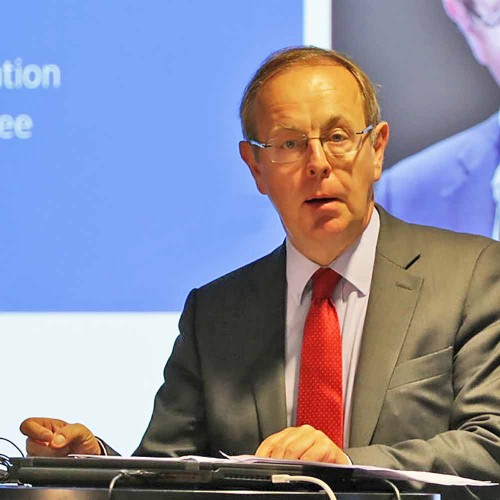
DG RTD-Research & Innovation
Patrick Child
Deputy Director-General
Directorate-General Research and Innovation (DG RTD)
European Commission
How does the Joint Programming Platform Smart Energy Systems contribute to the efforts of transforming the European energy system and the European Green Deal?
Smart energy systems are vitally important to provide the flexibility and resilience needed to accelerate electrification based on renewable energy sources, as a key dimension of our action on climate change. The Joint Programming Platform Smart Energy Systems is a focus for cooperation and joint programming of research and innovation between EU, national and regional funding partners. It will make major contributions to our shared goals under the European Green Deal including with active participation of communities and regions. We strongly welcome the enthusiastic support of Austrian participants in this important initiative.
As part of the international research and innovation cooperation on clean energy transition, how do you see the role of Mission Innovation and the ongoing renewal of it?
Mission Innovation (MI) is one of the key international cooperation platforms through which the EU promotes the ambitions of the European Green Deal globally. Building on the success of current initiatives, MI is preparing to launch an ambitious second phase at the next Ministerial meeting, hosted by Chile in May this year. The future MI cooperation will include missions that will inspire and lead members and partners to commit to actions, which can reach tipping points and deliver climate impacts within the next decade. A new MI platform will allow continuation of sharing information, best practices and results of existing initiatives. Achieving these ambitious goals requires strengthened cooperation with members, including we hope new partner countries as well as investors and innovators in the private sector and the research and innovation community in Europe and beyond. Austria is very active in MI, with a leading role on preparing the future missions and a sustained contribution to the secretariat. As current chair of the Steering Board of Mission Innovation, I look forward to continuing this close cooperation with Austria and other partners as we prepare Ministers’ decisions on the future direction of MI and its contribution to the wider debate on Climate change among leaders at the COP26 meeting in November in Glasgow.vorzubereiten.
During the Pioneer Call 2019, non-European partners from Mission Innovation countries contributed as well. Which opportunities could arise from expanding the network of membership of Mission Innovation?
Climate change and the clean energy transition are global challenges that require global solutions. International cooperation in research and innovation is needed to mobilise countries around the world on commonly agreed objectives. Our EU experience of international collaboration through the SET-Plan and ERA-Nets is something that we can share with other MI partners as inspiration for future effective multilateral international cooperation in joint projects. Moreover, expanding the collaboration of ERA-Nets with Mission Innovation countries provides opportunities to align the R&I activities under the SET- Plan with Mission Innovation priorities.
How would you define the main goals and key challenges of the new Clean Energy Transition Partnership (CETP) initiative?
Achieving a climate neutral society by 2050 is one of Europe’s most important challenges and the raison-d’être of the European Green Deal. The transformation of the energy sector is at the heart of this agenda. Achieving a clean and integrated energy system requires a sustainable and socially fair transition, encompassing technological, social, economic and political dimensions. Research and innovation (R&I) is vitally needed to support this transition with new technologies, strategies and business models. The EU’s upcoming Horizon Europe framework programme will generate a wave of multidisciplinary impact-driven R&I actions to support the transition, including the Clean Energy Transition Partnership (CETP). For the next 10 years, the CETP will be a cornerstone for multilateral R&I collaboration in Europe and beyond, supporting national and regional research programmes in finding and implementing a shared vision. The CETP’s transformative research and innovation programme will be reflected in a challenge-driven and transdisciplinary Strategic Research and Innovation Agenda (SRIA). Implementation will be through the CETP joint programming activities. We also need to find synergies with other initiatives and partnerships to ensure that the CETP adds value and is coherently embedded in the overall SET-Plan landscape.